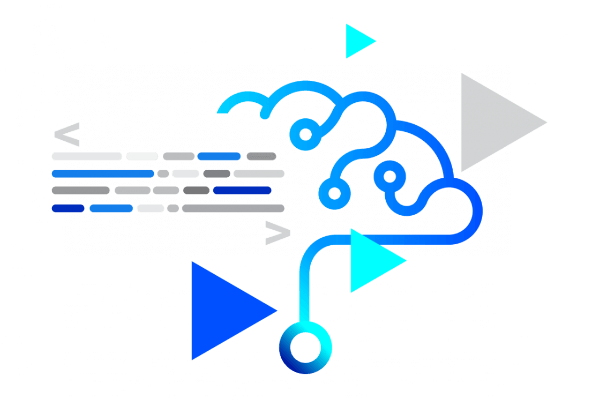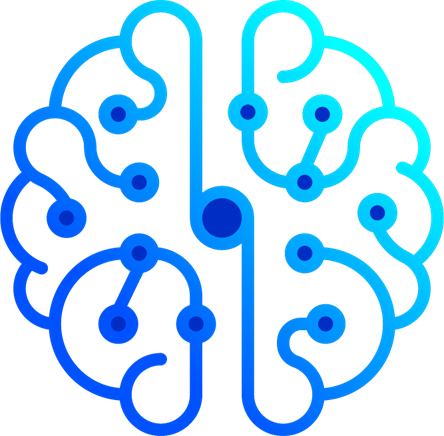What is a Large Language Model (LLM)?
In the dynamic world of artificial intelligence, Large Language Models (LLMs) represent a major breakthrough that is revolutionising the way we interact with technology. These models, based on deep learning techniques, redefine the boundaries of what is possible in natural language processing (NLP).

Defining a Large Language Model
A large language model (LLM) is a deep learning algorithm that can perform a variety of NLP tasks. Large language models use transformation models and are trained using huge data sets (hence the term “large”). They can recognise, translate, predict, or generate text or other types of content.
Large language models are also known as neural networks, which are computer systems inspired by the human brain. These neural networks work in layers.
In addition to human language learning for AI applications, large language models are also capable of performing various tasks, such as writing software code. Like the human brain, large language models need to be pre-trained and refined to solve problems such as text classification, answering questions, summarising documents, and generating texts.
Large language models also have the ability to learn. This capability comes from the knowledge the model gains as it learns. We can think of these “memories” as the model’s knowledge bank.
Main components of large language models
Large language models are made up of several layers of neural networks. Recurrent layers, feedforward layers, embedding layers, and attention layers work in tandem to process input text and generate content.
- The embedding layer creates integrations from the input text. This part of the large language model captures the semantic and syntactic meaning of the input, so that the model can understand the context.
💡 Example: if the input text is: “A cat chases a dog”, the integration layer creates embeddings that encode relationships between words, such as the fact that “chase” implies an action involving the cat and the dog. - The feedforward layer of a large language model consists of several connected layers that transform the input layers. These layers enable the model to perform higher level abstractions, i.e. to understand the user's intention with respect to the text they entered.
💡 Example: if the input text is “Book a flight from New York to London”, the feedforward layer helps the model recognise that the user’s intent is to find flight information, including departure and destination cities. - The recurrent layer interprets the words in the text in sequence. It understands the relationship between the words in a sentence.
💡 Example: In the sentence “She opened the door and the alarm went off”, the recurrent layer helps the model understand that the “alarm” that goes off is related to the “open the door” action. - The attention layer allows a language model to focus on the unique parts of the input text that are relevant to the current task. This layer allows the model to generate more accurate results.
💡 Example: For the question “What is the capital of France?”, the attention layer focuses on the word “France” when generating the answer, as this is the most important part of the input to answer the question.
What are the different types of large language models?
There is a scalable set of terms to describe the different types of large-scale language models. The most common types are:
Zero-shot models
There are large generalised models, trained on a corpus of generic data, and able to give a fairly accurate result for general use cases. No additional AI training is required.
Domain-specific models
Additional training on a zero-shot model can lead to a more refined model that is domain-specific.
Language model
A language model is a type of LLM designed specifically to understand and generate human language. These templates are often used for tasks such as machine translation, text generation, text summary, and answering questions.
Multimodal model
LLMs were originally designed to deal with text only, but with a multimodal approach, they can process both text and images.
The benefits of LLMs
With many existing applications, large language models are particularly useful for problem solving. They provide information in a format that users can easily understand. Here are some of its benefits:
Multilingual Capabilities
LLMs are capable of working in multiple languages without requiring a complete overhaul. This makes them highly versatile for global applications.
Few-shot and zero-shot learning
These models are capable of generating content without the need for large amounts of text input. They can perform tasks or answer questions even on topics they didn't see during training, which is an advantage when it comes to new topics.
Semantic understanding
LLMs can understand language semantics. They can capture nuances, context and even emotions in the text introduced, which is valuable for analysing sentiment, recommending content and generating realistic and humane responses.
Efficiency and cost-effectiveness
From a budgetary point of view, LLMs are very cost-effective, as they do not require major updates. They can be deployed on an existing infrastructure and used for a variety of applications, reducing the need for specialised tools.
Accessibility
Large language models help make some technologies more accessible. They create voice assistants, chatbots and other applications that make it easier for people who have a disability or who are not necessarily technology-minded to use the technology.
Customisation
LLMs can be refined to provide personalised content and recommendations. This is crucial in applications such as content curation, where they can learn user preferences and provide tailored experiences.
Accelerating innovation
These models provide a foundation for rapid innovation in natural language understanding and generation. They have the potential to foster breakthroughs in a variety of areas, from health care to education, by automating tasks and helping with decision-making.
Data efficiency
LLMs can work effectively with limited training data, making them valuable for tasks where data collection is difficult or expensive.
Types of applications with an LLM
LLMs are becoming increasingly popular because they can easily be used for a variety of NLP tasks, including:
- Text Generation: the ability to generate text about any subject on which the LLM has been trained.
- Translations: for LLMs trained in multiple languages, the ability to translate from one language to another is a common feature.
- Content Summary: summarising paragraphs or multiple pages of text.
- Rewriting content: rewriting a paragraph or multiple text chapters.
- Classification and categorisation: an LLM can classify and categorise shared content.
- Sentiment Analysis: Most LLMs can be used for sentiment analysis to help users better understand the intent of a particular response or piece of content.
- Conversational AI and chatbots: LLMs can enable a conversation with a user in a way that is generally more natural than older generations of AI technologies.
One of the most common uses of conversational AI is the chatbot. It can exist in various forms, in which a user interacts using a question-and-answer model. The most widely-used LLM-based AI chatbot in 2023 was ChatGPT, developed by OpenAI. 2024 looks like a promising year for other companies looking to innovate in this field.

What are the different types of large language models?
There is a scalable set of terms to describe the different types of large-scale language models. The most common types are:
Understanding the basics
Before you begin, it's important to have a good understanding of machine learning, natural language processing (NLP), and neural network architectures, particularly transformation models that are commonly used in LLM. You will either need to recruit experts, or start training yourself.
Model training
This step introduces the collected data into the model and allows the model to learn gradually. Training an LLM can take a lot of time and computing resources, as the model needs to adjust its internal parameters to generate or understand language.
Data collection
An LLM database is composed of a huge data set. This database typically includes a large number of texts from books, websites, articles, and other sources, to ensure that the model can learn a variety of styles and linguistic contexts.
Adjustment and evaluation
After initial training, the model is usually refined with more specific data to improve its performance in certain tasks or areas. Continuous evaluation is required to measure and improve the accuracy of the model.
Choosing the right infrastructure
Due to the IT requirements of LLM training, you will need access to powerful hardware. This often means using cloud solutions that offer high-performance GPUs or TPUs*.
Implementation and maintenance
Once trained, the model is used in real-world applications. Ongoing maintenance is required to update the model with new data, adapt it to changes in language usage, and improve it in response to feedback.
Selecting an architecture model
Choose a neural network architecture. Transformer models, such as BERT (Bidirectional Encoder Representations from Transformers) or GPT (Generative Pre-trained Transformer), are popular choices thanks to their efficiency.
Ethical considerations
It is important to consider the ethical implications of your LLM, including bias in training data and potential misuse of the technology. A major fault could discredit an application or open it to ridicule.
Given the complexity and resources involved in this process, creating an LLM is typically reserved for companies with significant resources, or individuals with access to cloud computing platforms and in-depth knowledge of AI and ML solutions.
FAQ
What are the main LLMs available?
Large language models (LLM) include OpenAI's GPT-3 and GPT-2, BERT, Google's T5 and TransformerXL for contextual language understanding. RoBERTa (from Facebook AI and XLNet) combines the qualities of GPT and BERT, Baidu is developing ERNIE, while ELECTRA stands out in the field of pre-training. Finally, Microsoft's DeBERTa improves attention technique.
How can you assess the performance of an LLM?
LLM performance evaluation means assessing factors such as language proficiency, context consistency and understanding, factual accuracy, and the ability to generate relevant and meaningful responses.
How do large language models work?
Large-scale language models use transformative models and are trained using huge data sets. They can recognise, translate, predict, or generate text or other content. Large language models are also known as neural networks.
What is the difference between large language models and generative AI?
The main difference between large language models (LLMs) and generative AI lies in their field of application. LLMs focus specifically on understanding and generating human language, dealing with text-related tasks. Generative AI, on the other hand, is larger and can create various types of content such as images, music and videos, in addition to text.
What is a transformer model?
A transformer model is an advanced artificial intelligence architecture, mainly used in natural language processing. It is distinguished by its ability to simultaneously process sequences of entire data (such as sentences or paragraphs), rather than analysing them word by word. This attention-based approach allows the model to understand the context and relationships between words in a text, making language processing more efficient and accurate.
OVHcloud and LLMs

AI & machine learning
At OVHcloud, we believe in the outstanding potential of this practice across all business sectors. And we believe that its complexity should not stand in the way of the use of big data and machine learning.

AI Training
Launch your AI training tasks in the cloud, without having to worry about how the infrastructure works. AI Training enables data scientists to focus on their core business, without having to worry about orchestrating computing resources.

Public Cloud
Accelerate your business, automate your infrastructure An ecosystem of standard solutions for deploying your applications in the cloud.
*GPUs are versatile processors used for games, graphics and some machine learning tasks, and excel in parallel processing. TPUs, by contrast, specialise in machine learning, particularly for efficiently training and running large AI models often used in cloud and edge computing.